Mariner 5: return to Venus
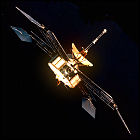 Launched four months before, NASA/JPL’s unmanned Mariner 5 space probe reaches the planet Venus. With its cameras removed to make way for other instrumentation, Mariner 5 provides valuable data on the makeup of the Venusian atmosphere and the probable conditions on the surface, corroborating what the Soviet Union’s successful landing of Venera 4 had found: a planet whose dense atmosphere traps heat and carbon dioxide, resulting in oven-like temperatures and ground-level pressures. NASA attempts to keep Mariner 5 functioning months after its flyby of Venus for tandem measurements of solar wind with Mariner 4, which has now passed beyond Martian orbit, but contact cannot be reliably maintained with Mariner 5 long enough to conduct the experiment.
Launched four months before, NASA/JPL’s unmanned Mariner 5 space probe reaches the planet Venus. With its cameras removed to make way for other instrumentation, Mariner 5 provides valuable data on the makeup of the Venusian atmosphere and the probable conditions on the surface, corroborating what the Soviet Union’s successful landing of Venera 4 had found: a planet whose dense atmosphere traps heat and carbon dioxide, resulting in oven-like temperatures and ground-level pressures. NASA attempts to keep Mariner 5 functioning months after its flyby of Venus for tandem measurements of solar wind with Mariner 4, which has now passed beyond Martian orbit, but contact cannot be reliably maintained with Mariner 5 long enough to conduct the experiment.
Mariner 5 launched
 A near-identical twin of NASA/JPL’s unmanned Mariner 4 Mars probe, Mariner 5 lifts off en route to the planet Venus. Though the space probe’s architecture is similar to that of Mariner 4, Mariner 5 is modified to include solar shades to keep parts of the spacecraft cool, a problem which doesn’t exist at Mars. Mariner 5 takes almost exactly four months to reach Venus.
A near-identical twin of NASA/JPL’s unmanned Mariner 4 Mars probe, Mariner 5 lifts off en route to the planet Venus. Though the space probe’s architecture is similar to that of Mariner 4, Mariner 5 is modified to include solar shades to keep parts of the spacecraft cool, a problem which doesn’t exist at Mars. Mariner 5 takes almost exactly four months to reach Venus.
Venera 4
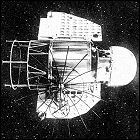 The Soviet Union launches Venera 4, a space probe dispatched to the planet Venus. Venera 4 is equipped with a landing probe which it deposits into the planet’s dense atmosphere in October, and the probe’s findings stun scientists on Earth who had long considered Venus a near-twin of Earth: the atmosphere is predominantly carbon dioxide, with minimal oxygen and a pressure nearly 100 times Earth’s atmospheric pressure at sea level. The temperature within the Venusian atmosphere is found to soar past 800 degrees Fahrenheit, presenting a challenge for designers of the next round of vehicles to visit the planet. The Venera 4 landing probe is not equipped with cameras, and contact is lost with it before contact is made with the ground.
The Soviet Union launches Venera 4, a space probe dispatched to the planet Venus. Venera 4 is equipped with a landing probe which it deposits into the planet’s dense atmosphere in October, and the probe’s findings stun scientists on Earth who had long considered Venus a near-twin of Earth: the atmosphere is predominantly carbon dioxide, with minimal oxygen and a pressure nearly 100 times Earth’s atmospheric pressure at sea level. The temperature within the Venusian atmosphere is found to soar past 800 degrees Fahrenheit, presenting a challenge for designers of the next round of vehicles to visit the planet. The Venera 4 landing probe is not equipped with cameras, and contact is lost with it before contact is made with the ground.
Venera 3
 The Soviet Union launches Venera 3, its third attempt to send a spacecraft to Venus. Intended to land on the surface of what is still thought of as a near-twin of Earth, Venera 3’s landing capsule does indeed enter the Venusian atmosphere in March 1966, though the capsule loses contact with Earth and goes silent before ever hitting the surface of Venus. Venera 3 may be the first human-made object ever to arrive on another planet, but no telemetry exists to prove that it arrived in one piece.
The Soviet Union launches Venera 3, its third attempt to send a spacecraft to Venus. Intended to land on the surface of what is still thought of as a near-twin of Earth, Venera 3’s landing capsule does indeed enter the Venusian atmosphere in March 1966, though the capsule loses contact with Earth and goes silent before ever hitting the surface of Venus. Venera 3 may be the first human-made object ever to arrive on another planet, but no telemetry exists to prove that it arrived in one piece.
Venera 2
 The Soviet Venera 2 space probe is launched toward Venus, and for the first time cameras are placed aboard a vehicle bound for that planet. Venera 2 will eventually pass within 14,000 miles of its target, but electrical failures silence the space probe and its instruments long before the flyby.
The Soviet Venera 2 space probe is launched toward Venus, and for the first time cameras are placed aboard a vehicle bound for that planet. Venera 2 will eventually pass within 14,000 miles of its target, but electrical failures silence the space probe and its instruments long before the flyby.
Zond 1
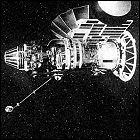 The Soviet Union launches the space probe Zond 1 toward Venus, a more sophisticated version of the Venera 1 vehicle sent to that planet in 1961. Thanks to an electrical short within the Zond space probe, ground controllers lose all contact a month after it leaves Earth; by the time it swings past Venus at over 60,000 miles months later, Zond 1 has shut down completely.
The Soviet Union launches the space probe Zond 1 toward Venus, a more sophisticated version of the Venera 1 vehicle sent to that planet in 1961. Thanks to an electrical short within the Zond space probe, ground controllers lose all contact a month after it leaves Earth; by the time it swings past Venus at over 60,000 miles months later, Zond 1 has shut down completely.
Mariner 2 visits Venus
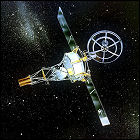 NASA’s unmanned Mariner 2 probe is the first unmanned spacecraft to successfully reach and take measuresments of another planet in the solar system. Passing by Venus at a distance of 25,000 miles, Mariner 2 detects a cool atmosphere with a blistering hot surface underneath it – quickly dispelling any hopes of finding life there. Mariner 2 isn’t equipped with any cameras, which is just as well: unless any cameras had ultraviolet filters, they would have seen nothing but featureless clouds at Venus. Mariner 2 continues on into a solar orbit, shutting down early in 1963.
NASA’s unmanned Mariner 2 probe is the first unmanned spacecraft to successfully reach and take measuresments of another planet in the solar system. Passing by Venus at a distance of 25,000 miles, Mariner 2 detects a cool atmosphere with a blistering hot surface underneath it – quickly dispelling any hopes of finding life there. Mariner 2 isn’t equipped with any cameras, which is just as well: unless any cameras had ultraviolet filters, they would have seen nothing but featureless clouds at Venus. Mariner 2 continues on into a solar orbit, shutting down early in 1963.
Mariner 2 launched
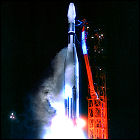 NASA launches its first interplanetary spacecraft, the unmanned space probe Mariner 2, en route to Venus. During its three-month trip from Earth to Venus, Mariner 2 takes measurements of solar wind, charged particles, and an experiment is included to measure the amount of dust and micrometeoroids between the two planets. The probe briefly loses attitude control several times in flight, but regains proper orientation in each instance.
NASA launches its first interplanetary spacecraft, the unmanned space probe Mariner 2, en route to Venus. During its three-month trip from Earth to Venus, Mariner 2 takes measurements of solar wind, charged particles, and an experiment is included to measure the amount of dust and micrometeoroids between the two planets. The probe briefly loses attitude control several times in flight, but regains proper orientation in each instance.
Mariner 1 launched and lost
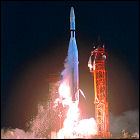 NASA launches the JPL-built unmanned space probe Mariner 1, the first of two identical spacecraft intended to study the planet Venus. Mariner 1’s mission, however, is cut short before it even leaves Earth’s atmosphere: a communication loss between its Atlas-Agena booster rocket and ground-based control systems sends the rocket off course. Fearing that it might tumble into the Atlantic Ocean’s heavily traveled shipping lanes, NASA orders the vehicle to self-destruct in mid-air. Many later accounts lay the blame at an error in the code loaded into the rocket’s on-board guidance computer. Mariner 1’s mission objectives are transferred to its identical twin, Mariner 2, due to be launched in just over a month.
NASA launches the JPL-built unmanned space probe Mariner 1, the first of two identical spacecraft intended to study the planet Venus. Mariner 1’s mission, however, is cut short before it even leaves Earth’s atmosphere: a communication loss between its Atlas-Agena booster rocket and ground-based control systems sends the rocket off course. Fearing that it might tumble into the Atlantic Ocean’s heavily traveled shipping lanes, NASA orders the vehicle to self-destruct in mid-air. Many later accounts lay the blame at an error in the code loaded into the rocket’s on-board guidance computer. Mariner 1’s mission objectives are transferred to its identical twin, Mariner 2, due to be launched in just over a month.
Sagan: let’s terraform Venus
 In the journal Science, Carl Sagan proposes an audacious scheme to alter the chemistry of the atmosphere of Venus, making it habitable for humans. His plan involves depositing algae colonies into the planet’s clouds to begin converting the planet’s carbon dioxide into breathable oxygen, and the idea is years ahead of its time (and will later prove to be impractical when more direct studies are made of the Venusian atmosphere).
In the journal Science, Carl Sagan proposes an audacious scheme to alter the chemistry of the atmosphere of Venus, making it habitable for humans. His plan involves depositing algae colonies into the planet’s clouds to begin converting the planet’s carbon dioxide into breathable oxygen, and the idea is years ahead of its time (and will later prove to be impractical when more direct studies are made of the Venusian atmosphere).
Venera 1
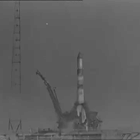 The Soviet Union launches Venera 1, the first interplanetary space probe. Bound for Venus, Venera 1 returns measurements and observations taken during its three-month flight, but loses contact with ground controllers just as it makes its closest approach to Venus at a distance of 62,000 miles from the planet. It falls into an orbit around the sun after falling silent.
The Soviet Union launches Venera 1, the first interplanetary space probe. Bound for Venus, Venera 1 returns measurements and observations taken during its three-month flight, but loses contact with ground controllers just as it makes its closest approach to Venus at a distance of 62,000 miles from the planet. It falls into an orbit around the sun after falling silent.